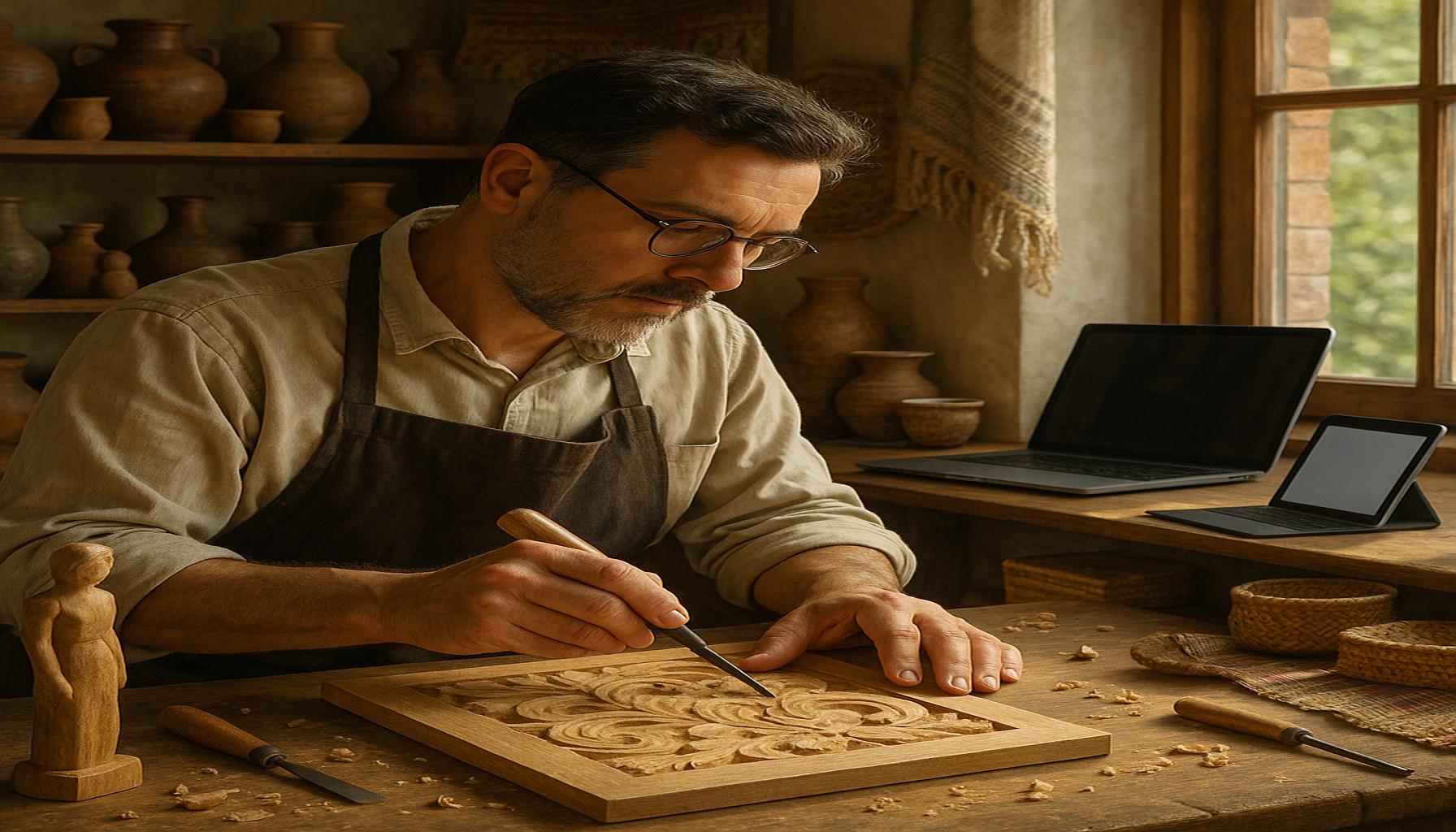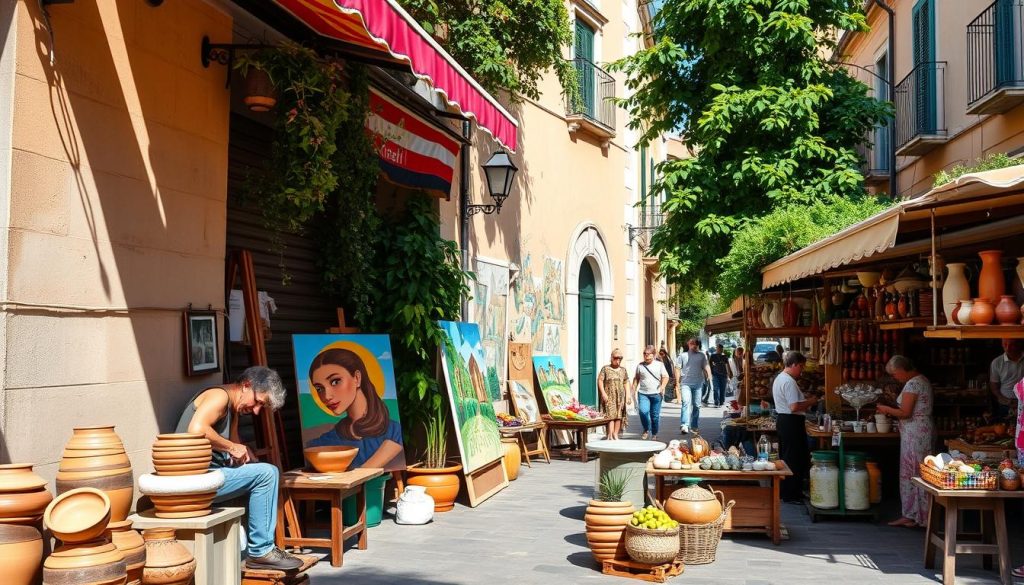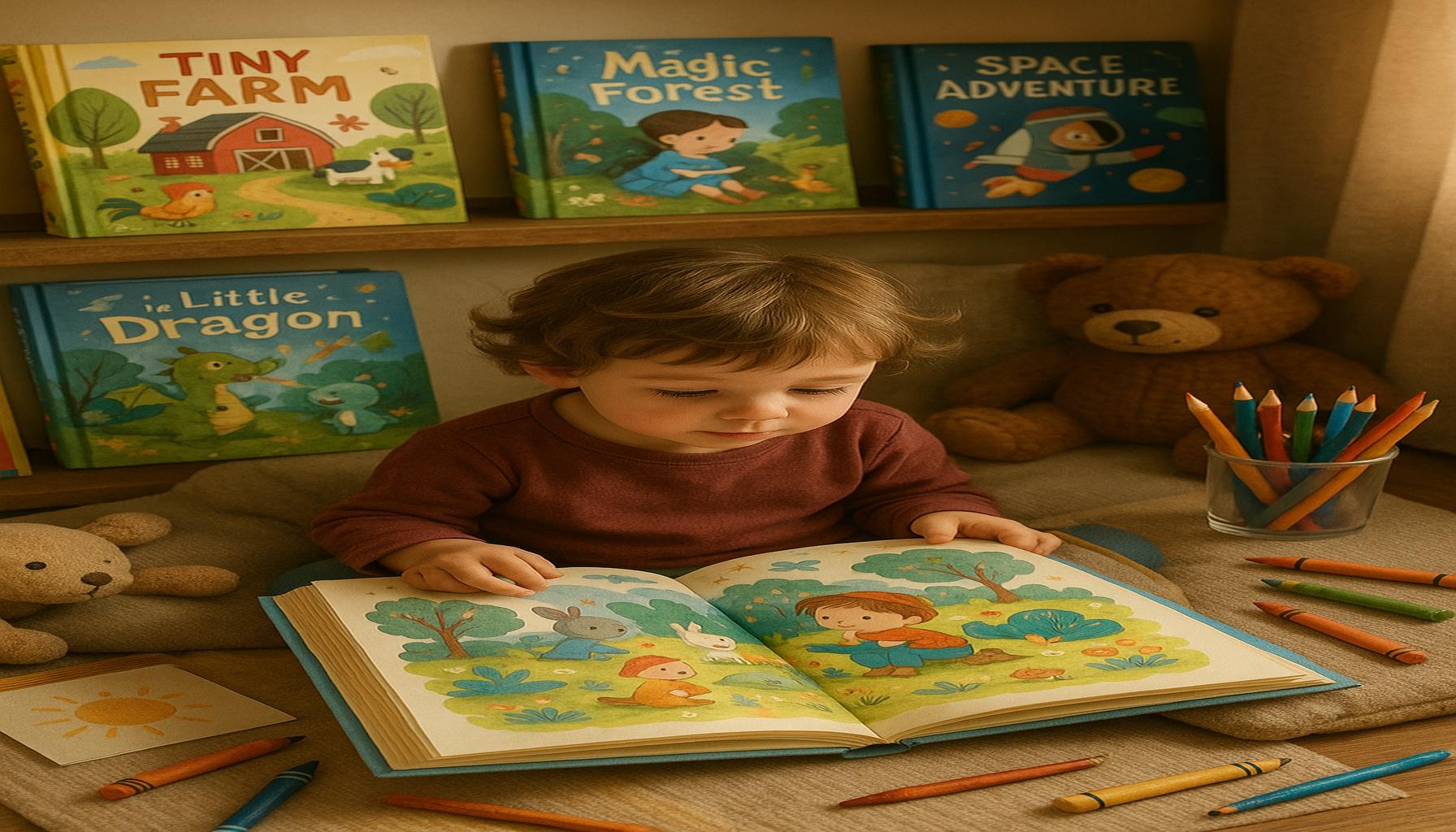The Renaissance of Craftsmanship: Valuing Handmade in the Digital Age

Embracing the Handcrafted Revolution
In a world dominated by mass production and digital convenience, there is a burgeoning appreciation for handmade craftsmanship. As consumers increasingly seek unique and personalized items, this renaissance of craftsmanship is reshaping our relationship with material goods. The revival of artisanal skills is not merely a trend; it signifies a profound shift in values.
Why Craftsmanship Matters
This renewed interest in handmade products highlights several key aspects:
- Authenticity: Handmade items often carry personal stories and cultural significance. For instance, a handcrafted ceramic mug might be infused with local traditions, reflecting the artisan’s heritage, making it a meaningful addition to one’s kitchen rather than just a functional object.
- Quality: Artisans prioritize superior materials and meticulous techniques over speed. Unlike mass-produced goods, which often prioritize low cost and high turnover, handcrafted items reflect an investment in craftsmanship. For example, a tailored suit made by a skilled tailor not only ensures a perfect fit but utilizes high-quality fabrics that stand the test of time.
- Sustainability: Many craftspeople focus on environmentally friendly practices. Artisans frequently source materials locally or employ sustainable methods. Brands such as Patagonia exemplify this shift by using recycled materials and emphasizing repairable goods, thereby nurturing a more sustainable economy.
The digital age has created an intriguing juxtaposition. While technology brings us closer to global products, it also cultivates a yearning for the tangible and the personal. Consumers are now more than ever inclined to support local makers and embrace the artistry behind handmade goods. The rise of platforms like Etsy has enabled artisans to reach a broader audience, reinforcing the demand for unique, locally crafted items.
A Growing Movement
This movement is evident in various industries, including:
- Fashion: Ethical brands are thriving by promoting slow fashion. Companies like Everlane emphasize transparency and sustainability, attracting consumers keen on environmentally friendly practices.
- Home Decor: Unique handcrafted furnishings are becoming popular. Custom furniture makers and local artisans now compete with bigger chains, offering distinct pieces that reflect individual tastes and styles, thus enhancing personal spaces.
- Food & Beverage: Artisanal producers highlight quality and tradition. Craft breweries and small-batch producers have exploded in popularity, providing consumers with a personalized experience that contrasts sharply with mass-produced beverages.
As technological systems evolve, the pivotal question remains: will handmade craftsmanship continue as a niche hobby, or will it emerge as a defining counter-narrative in consumer behavior? The answer may be woven into the next chapter of how we value our possessions, steering us towards a world where once more, the individual touch is cherished above all else.

DISCOVER MORE: Click here to dive deeper
The Resurgence of Artisanal Skills
As we navigate the digital landscape, a remarkable revival of artisanal skills is emerging. This phenomenon manifests a collective yearning for authenticity in an often impersonal world. The allure of handmade craftsmanship offers a counterbalance to the disposability of mass-produced goods, underscoring a desire for deeper connections with the items we choose to invite into our lives. Today, consumers are increasingly favoring products that tell stories, bearing the unique fingerprints of their creators.
Craftsmanship and Connection
In this digital era, where digital storefronts have become ubiquitous, handmade items stand out for the emotional connection they foster between the maker and the buyer. The importance of story and tradition cannot be overstated:
- The Artisan’s Narrative: Each handcrafted object carries the craftsmanship’s unique narrative. From locally sourced wood for a custom dining table to the intricate weaving patterns of a hand-dyed textile, these items resonate with the stories of their makers, creating a personal bond that mass-manufactured products cannot replicate.
- Cultural Heritage: Many artisans are reviving traditional techniques that might otherwise have been lost to the tides of industrialization. For example, Native American weavers who incorporate tribal symbols in their textiles are preserving ancestral practices while sharing their cultural heritage.
- Nostalgia and Memory: Handcrafted products often evoke feelings of nostalgia, reminding consumers of cherished personal experiences. A hand-forged kitchen knife may mirror culinary traditions passed down through generations, imbuing it with a significance beyond mere utility.
The appeal of the handcrafted revolution is further illuminated by the growth of local makers’ markets and community workshops. These gatherings provide an interactive platform for artisans to showcase their talents and engage with consumers genuinely. The face-to-face interactions foster deeper appreciation for skills like pottery, woodworking, and leathercraft, ensuring that these practices do not fade into obscurity.
Impacts on Consumer Behavior
As handmade goods gain traction, the overall consumer landscape is shifting. Studies reveal that millennials and younger generations place a premium on brands that prioritize ethics and craftsmanship. They are more likely to support businesses that reflect their values and integrate transparency into their operations.
- Conscious Consumerism: Shoppers are becoming increasingly aware of the implications of their purchasing choices. They seek to support sustainable practices that positively impact the environment and local communities.
- Investment in Quality: Consumers view handmade items as a long-term investment instead of temporary solutions. The lasting quality often justifies the higher price tags associated with artisanal goods.
- Supporting Local Economies: Choosing handmade often translates to supporting local artisans and businesses, thereby benefiting the community’s economic stability.
This shift in values emphasizes the critical role of craftsmanship in redefining consumer priorities. As we delve deeper into this renaissance, the United States finds itself at the forefront of a movement that celebrates individual artistry and sustainable practices, proving that even in a digital age, the human touch remains irreplaceable. The question then arises: how will this growing appreciation for craftsmanship shape the marketplace of tomorrow?
| Advantages of Handmade | Description |
|---|---|
| Quality and Authenticity | Handmade products often exhibit superior craftsmanship and unique characteristics, leading to higher quality items that reflect the individuality of artisans. |
| Sustainability | Many craftspeople prioritize eco-friendly practices, resulting in products that are not only beautiful but also environmentally friendly and contribute to supporting local economies. |
The phenomenon of valuing handmade goods in today’s digital age marks a significant shift in consumer behavior, as people increasingly seek out items that tell a story and carry emotional resonance. As we witness the coming together of traditional craftsmanship with modern technology, the appreciation for handmade reveals a deeper connection between art, community, and sustainability. The term “Renaissance of Craftsmanship” encapsulates a broader cultural movement, where consumers are not merely purchasing products but investing in a philosophy of **quality over quantity**. The skill and dedication involved in creating handmade items often translate into a deeper appreciation for the intricate details and unique attributes that distinguish these goods from mass-produced alternatives.This trend is manifesting in various sectors, from home décor to fashion accessories, providing artisans with a platform to share their narratives and connect with a global audience. By choosing handmade, consumers become part of a larger story that values **heritage**, **innovation**, and the art of creation itself. Each purchase becomes an endorsement of responsible craftsmanship, reinforcing the value of human labor and creativity in an era dominated by automation and digital replication. This vibrant resurgence of artisanal methods not only exemplifies a commitment to quality but also supports **sustainable practices** for future generations.
DISCOVER MORE: Click here to unlock the power of storytelling
Craftsmanship as a Form of Sustainability
As the awareness of environmental challenges grows, the renaissance of craftsmanship aligns harmoniously with the principles of sustainability. Many artisanal practices contribute positively to ecological efforts, reinforcing the idea that creating by hand often entails making mindful and ethical choices.
Slow Fashion Movement
A notable example of this movement is seen within the slow fashion industry, which advocates for a shift away from the fast fashion model known for environmental degradation and exploitative labor practices. Handmade clothing produced by local artisans exemplifies a commitment to quality over quantity. This sector emphasizes the use of eco-friendly materials, ethical labor, and timeless designs, promoting a lifestyle built on longevity and enduring style.
- Reduction of Waste: Craftsmanship often utilizes offcuts and repurposed materials, minimizing waste generated in the manufacturing process. Designers are increasingly finding creative ways to incorporate discarded textiles into fresh, innovative pieces. This practice not only addresses material waste but also sparks creativity within the artisan community.
- Local Sourcing: Many artisans choose to source their materials locally, reducing the carbon footprint associated with transportation. Supporting local economies by buying handmade goods fosters community resilience while promoting regional craftsmanship.
- Ethical Production: Artisans meticulously oversee their production processes, ensuring fair wages and safe working conditions. This stands in stark contrast to mass-market products often produced under questionable conditions.
Digital Platforms Elevating Artisans
Ironically, the same digital platforms that have promoted consumerism now serve as an invaluable resource for artisans looking to reach larger audiences. Websites like Etsy, Instagram, and Pinterest have transformed the landscape of handmade goods, providing artisans a global stage for their creations.
- Empowerment through Technology: Artisans are utilizing social media to build their personal brands, sharing their creative processes, and connecting directly with consumers. This level of interaction humanizes the shopping experience and fosters loyalty among buyers.
- Access to Markets: Digital marketplaces have eliminated geographical barriers, allowing artisans from rural areas to sell their goods to city dwellers and international customers. This newfound accessibility boosts sales and enhances visibility for traditionally marginalized crafts.
- Community Building: Online forums and groups focused on traditional crafts have increased knowledge-sharing among artisans, enabling them to hone their skills and collaborate on projects. These communities foster growth and resilience within the crafting world.
Moreover, technology has sparked an innovative wave within craftsmanship. New approaches to traditional crafts, such as 3D printing in woodworking and digital embroidery in fabric art, merge age-old techniques with modern technology, creating exciting new hybrid forms that appeal to diverse audiences.
As the appreciation for handmade artistry continues to flourish, it’s crucial to recognize how these practices resonate with contemporary values of sustainability, community support, and the celebration of individuality. Each artisan’s journey sheds light on a broader narrative—a hopeful reflection of society’s willingness to embrace meaningful connections in the pursuit of craftsmanship within the digital landscape.
DIVE DEEPER: Click here to discover more
Conclusion
As we navigate through the complexities of the digital age, the renaissance of craftsmanship underscores a profound shift in how society values creation. There is a growing appreciation for the stories behind handmade products—each piece reflects not just skill, but also passion, dedication, and culture. Artisans, empowered by technology, have transformed traditional practices into vibrant expressions that resonate with modern sensibilities.
This revival is not merely a trend; rather, it represents a recalibration of our purchasing priorities, emphasizing sustainability, ethical practices, and community engagement. The slow fashion movement, local sourcing, and minimal waste exemplify how the art of craftsmanship can align with eco-conscious values, providing consumers with choices that are both beautiful and responsible.
Furthermore, digital platforms have played an instrumental role, bridging the gap between artisans and consumers, allowing for a personalized and interactive shopping experience. These tools enhance visibility and accessibility for craftspeople who may have otherwise remained in the shadows, fostering a sense of global community among creators and supporters alike.
In conclusion, the value of handmade artistry in our increasingly automated world speaks to a longing for authenticity and connection. As we embrace this renaissance, it is important to consider not only the aesthetic or functional merits of handcrafted goods but also the cultural significance and ethical implications they carry. By choosing to support artisans, we not only uplift individual craftspeople but also invest in a future that champions creativity and sustainability.



